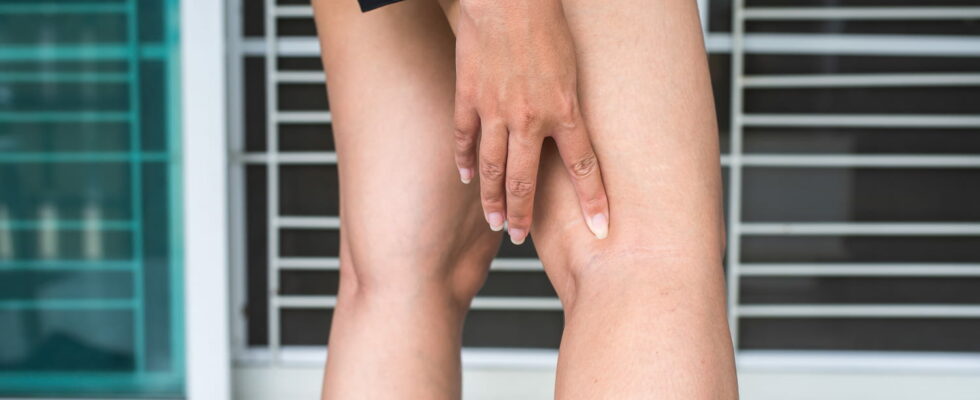There is a risk of infection…
Venous leg ulcers or “varicose” ulcers affect around 135,000 people in France according to Health Insurance figures. This pathology, which mainly affects women over 50-60 years old, has been on the rise over the past ten years. The cause is vascular in more than 80% of cases, that is to say they are caused by blood circulation problems.
A venous leg ulcer is a sore located in the lower part of the leg, including the ankle (malleolus). “It corresponds to a loss of substance on the leg due to a vascular cause – venous or arterial or even both (in this case we speak of a mixed ulcer). It is often seen in women who have had phlebitis or who have varicose veins, signs of venous insufficiency. But also sometimes in cases of arteritis, diabetes or following certain treatments“, explains Dr Sylvie Meaume, dermatologist and Head of the Geriatric Wounds and Healing Department (AP-HP Rothschild). This ulcer is easily recognizable and has specific characteristics:
- It never appears without warning on a healthy leg: it is often preceded by varicose veins and at its periphery by hyperpigmentation (ochre dermatitis), varicose eczema or venous or even lymphatic edema.
- It is of variable extent
- It appears insidiously “spontaneously” or caused by trauma (shock, blow, etc.)
- It is often exudative (it “oozes”)
- It is chronic: lasts more than 4 to 6 weeks, or even years
- There is a risk of infection (in this case the ulcer is painful, smelly and may become purulent (yellowish fluid) which delays healing), septicemia and in rare cases, cancer.
The diagnosis of a venous ulcer is based on a clinical examination (history of phlebitis, presence of varicose veins, patient symptoms, etc.), a venous Doppler ultrasound and measuring the systolic pressure index (SPI), a marker of cardiovascular risk. Other tests such as blood tests, a bacterial sample or a biopsy can sometimes be useful to clarify the diagnosis and treatment.
In France, this treatment “has no effectiveness”
The specialist in leg ulcers is the dermatologist or the vascular doctor who, once the arterial cause has been eliminated, will consider treatment in two stages:
► Local treatment with rigorous cleaning of the ulcer, absorbent or “greasy” dressings which “helps boost wound healing” and in the event of an infectious ulcer, antibiotics (“these should not be systematic”).
► A medical compression (prescribed by the vascular doctor) which helps to improve the muscle pump function, the function of the valves, to reduce the caliber of the veins, to resorb edema, to promote the regrowth of small vessels and to heal the wound. “In France, too many long-lengthening strips are still prescribed, which have no effectiveness on venous ulcers. However, it is essential to choose compression bands with a short elongation for intermittent occlusion of the leg and for a better effect on the deep network.
“In fact, these tapes only tighten when walking“, explains Dr Meaume, who has notably worked with the Lohmann & Rauscher laboratory on the Rosidal® range of technical dressings and compression bandages, available on medical prescription in pharmacies. In accordance with the recommendations of the High Authority of Health, it is recommended to place, under the bandage, a padding strip for even distribution of compression and to protect sensitive areas.
